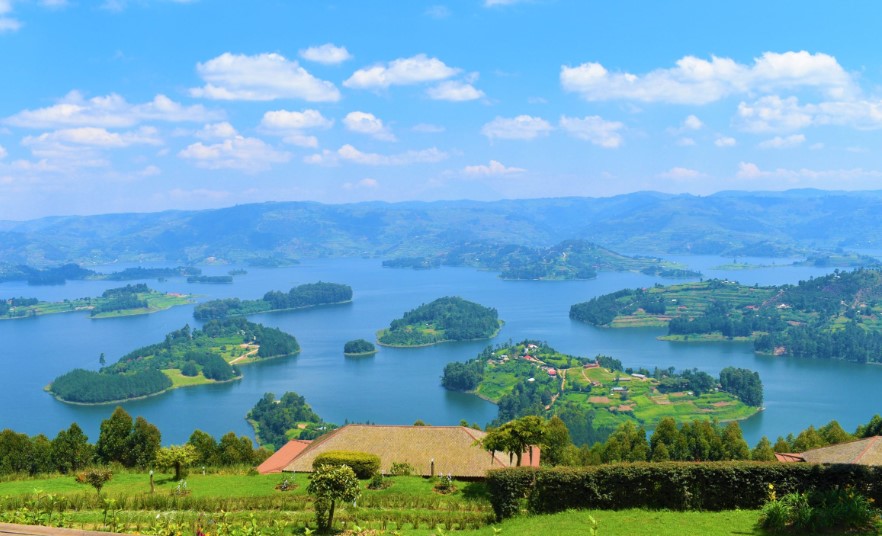Among the many natural wonders of Uganda, the crater lakes stand out as some of the most captivating and enchanting features that grace the Ugandan landscape. These stunning geological formations are scattered across the country, providing both locals and travelers with a unique opportunity to immerse themselves in the beauty of nature.
In this article, we will delve into the fascinating world of crater lakes in Uganda, exploring their origins, significance, ecological importance, and the enchanting experiences they offer to visitors.
Origins of Crater Lakes in Uganda
Uganda’s crater lakes were formed through various geological processes, primarily as a result of volcanic activity. The region’s tectonic history has played a significant role in shaping the landscape we see today. Thousands of years ago, volcanic eruptions gave birth to many of the mountains and volcanoes that define Uganda’s scenic topography.
During these volcanic eruptions, magma and gas would blast through the Earth’s crust, creating large cavities. Over time, these cavities filled with rainwater, forming what we now know as crater lakes.
Geographical Distribution
Uganda’s crater lakes are dispersed throughout the country, but they are especially prevalent in regions like Kabarole, Fort Portal, and the Kibale Forest National Park. Each crater lake has its distinct characteristics, offering a range of experiences to those who venture to explore them.
These lakes can be small, with diameters of a few hundred meters, or larger, spanning several kilometers. They vary in depth, shape, and even color, presenting an awe-inspiring palette that includes deep blues, greens, and sometimes even hues of pink, depending on the minerals and microorganisms present.
Ecological Significance
Beyond their breathtaking beauty, crater lakes play a crucial role in the local ecology. These lakes provide habitats for a variety of wildlife, including fish, birds, and insects, contributing to the rich biodiversity of the surrounding areas. Many of the crater lakes are surrounded by lush vegetation and forests, providing a haven for numerous plant species and supporting various ecosystems.
Additionally, some crater lakes serve as vital water sources for nearby communities, supplying water for domestic use, agriculture, and livestock. However, it is essential to balance the human need for water with the preservation of these delicate ecosystems to ensure their long-term sustainability.
Cultural and Spiritual Importance
For generations, crater lakes have held cultural and spiritual significance for the local communities living in their vicinity. These lakes often feature in local folklore, myths, and legends, shaping the beliefs and practices of the people.
They are often considered sacred places, and some communities believe that spirits inhabit these lakes. As a result, certain rituals and ceremonies are held to pay homage to the lakes and seek blessings for the well-being of the communities.
Recreational and Tourist Attractions
Crater lakes in Uganda offer a host of recreational opportunities for visitors seeking to explore the country’s natural wonders. Activities such as birdwatching, fishing, boat rides, hiking, and picnicking are popular among tourists and locals alike.
These activities provide an intimate and immersive experience with nature, allowing visitors to connect with the tranquility and beauty of the lakes and their surroundings.
Lake Bunyonyi
One of the most famous and picturesque crater lakes in Uganda is Lake Bunyonyi, which translates to “Place of Many Little Birds” in the local Rukiga language. Located in the southwestern part of the country near Kabale, Lake Bunyonyi is the second-deepest lake in Africa, reaching depths of up to 44 meters. The lake is renowned for its stunning scenery, surrounded by terraced hills and dotted with over 20 lush islands, each with its unique charm.
Tourists visiting Lake Bunyonyi can partake in a range of activities, such as canoeing, hiking to nearby viewpoints, birdwatching, and interacting with the local communities residing around the lake. The serenity and tranquility of Lake Bunyonyi make it an ideal destination for relaxation and rejuvenation, allowing visitors to unwind amidst nature’s splendor.
Lake Nyinambuga
Another notable crater lake is Lake Nyinambuga, located in the picturesque Fort Portal region. This lake, known for its turquoise-blue waters and the lush greenery surrounding it, offers a serene ambiance that captivates all who visit. The lake is embraced by gentle slopes, and its reflection paints a breathtaking portrait of the sky and its surroundings, making it a photographer’s paradise.
Visitors can explore the area through nature walks and guided tours, discovering the diverse wildlife and plant species thriving within the vicinity. The local communities are friendly and eager to share their cultural heritage with visitors, making the experience even more enriching.
Challenges and Conservation Efforts
Despite their undeniable allure, Uganda’s crater lakes face several challenges that threaten their preservation and ecological balance. The rapid population growth around some lakes has led to increased pollution, deforestation, and soil erosion, which directly impacts the water quality and biodiversity of these ecosystems. Additionally, unregulated tourism can pose risks to the fragile environments surrounding the lakes.
To address these challenges and promote sustainable tourism, various conservation efforts are underway. Local communities, government organizations, and NGOs are working together to raise awareness about the importance of preserving these natural wonders. Initiatives include waste management programs, reforestation campaigns, and responsible tourism practices that aim to protect the delicate ecosystems of the crater lakes while providing visitors with unforgettable experiences.
In Conclusion, Uganda’s crater lakes are unquestionably one of the country’s most enchanting treasures. Born from volcanic activity and shaped by time, these natural wonders offer both ecological significance and a source of inspiration for local communities and travelers alike. Each lake tells a unique story, inviting visitors to explore and immerse themselves in the captivating beauty of Uganda’s diverse landscape.
As we continue to appreciate these gems, it is crucial that we also recognize our responsibility to protect and preserve them for future generations, ensuring that these awe-inspiring creations endure as a testament to the magnificence of the natural world.



Comment (0)